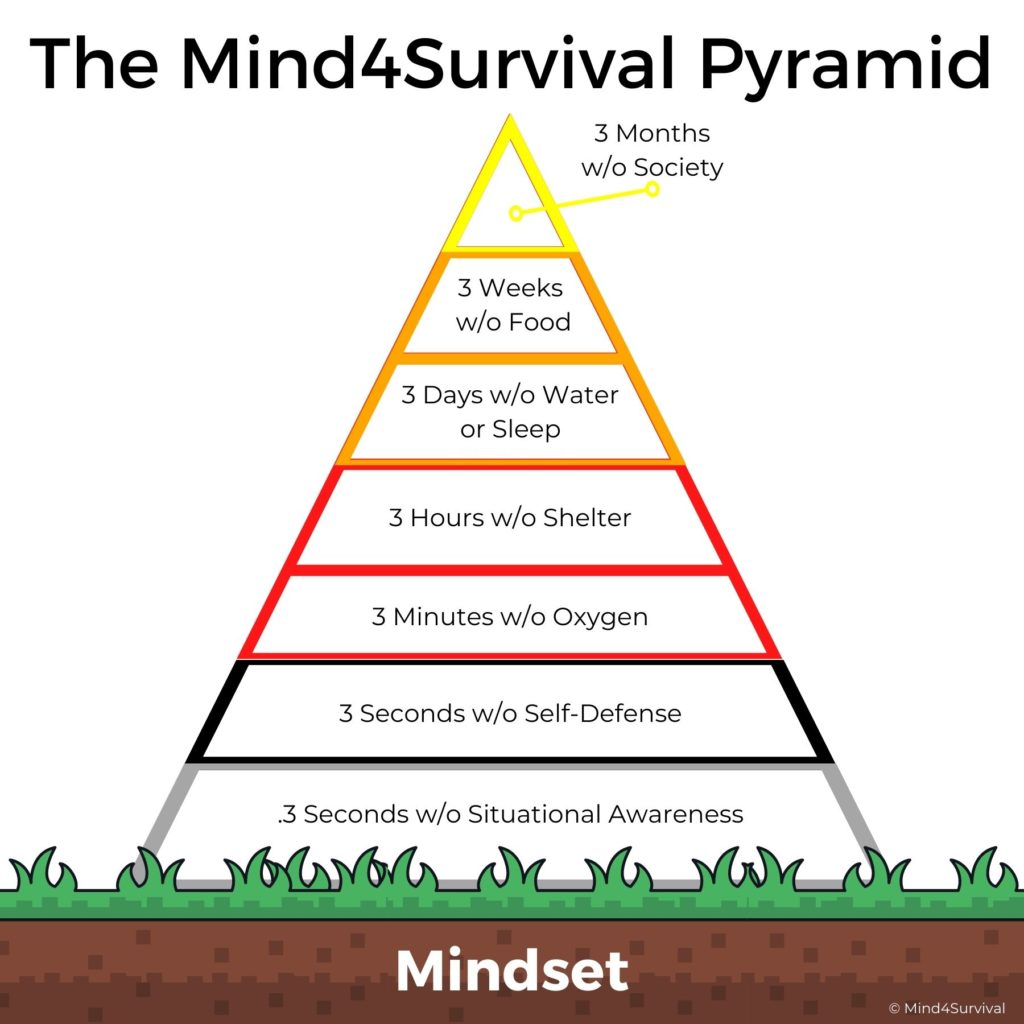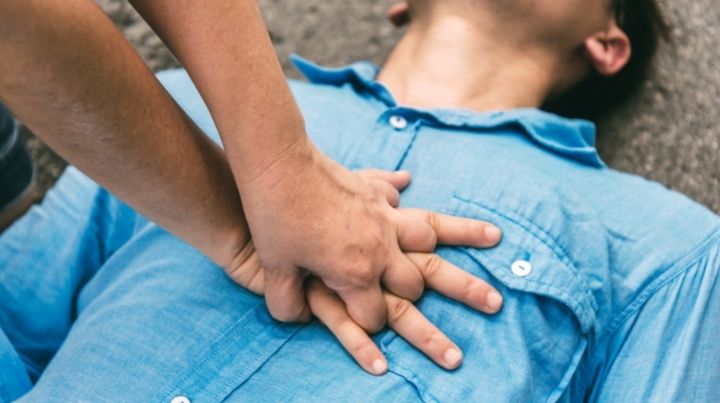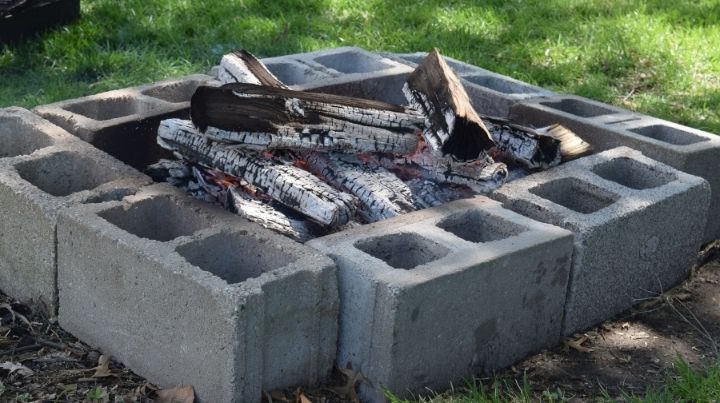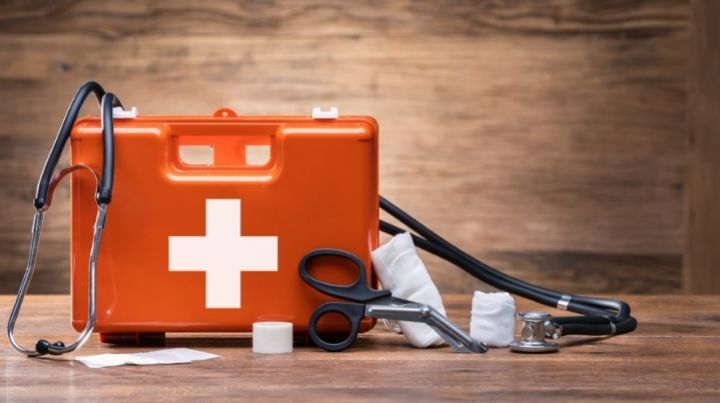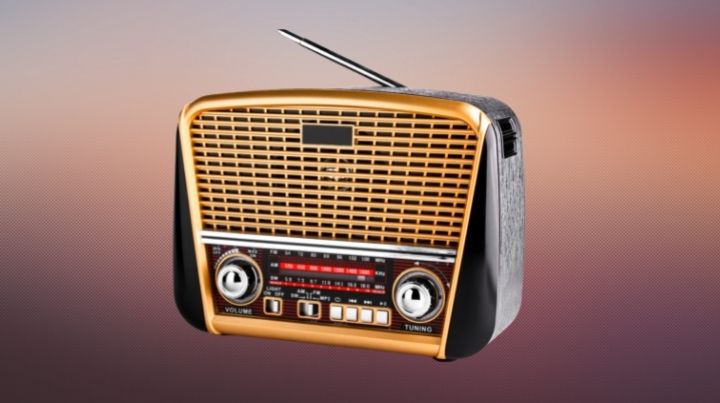119: Prepping Basics with George Taylor
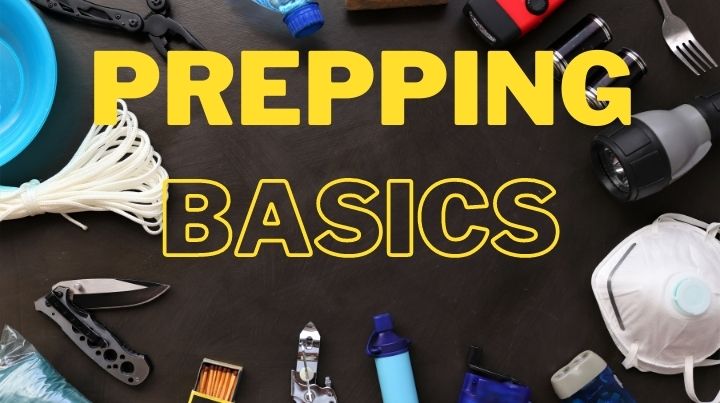

Podcast: Play in new window | Download
Are you interested in preparedness but unsure where to start? In this article and episode, we'll go over the prepping basics that are essential.
It's easy to get overwhelmed if you start out planning for epic long-term disasters reminiscent of the Mad Max movies, but the reality is, it doesn't need to be like that.
The Prepping Definition
Let's start with a prepping definition from the Oxford dictionary:
The practice of making active preparations for a possible catastrophic disaster or emergency, typically by stockpiling food, ammunition, and other supplies.
While the Oxford dictionary gives you the general idea, the true definition of prepping isn't that extreme.
What are the Prepping Basics
It's a mindset of thinking ahead and trying to avoid catastrophes or emergencies in the first place, and also being ready for events that only affect you personally: your car breaks down, and you have to walk home, your spouse loses their job, or you have to provide first aid for a family member.
While less dramatic than Oxford's definition, all of these events will be easier to handle if you are prepared.
You are far more likely to use practical prepping items like a filter for drinking water or a small food supply than a gas mask and a full-body biohazard suit.
The M4S Prepping Basics
There are more details in this article, but let's take a quick peek at the basics of preparedness.
The basics of prepping covers five fundamental areas.
Those areas are Mindset, Situational Awareness, Survival, Safety, and Self.
An excellent way to remember the Mind4Survival fundamentals of preparedness is by remembering M4S.
Mindset
Mindset is the first and most important aspect of practical prepping.
It's our mindset that establishes the foundation of our preparedness.
Mindset determines how you approach your life. I say “life” because our mindset is the attitude we use to navigate life, and life includes our preparedness.
Mindset sets your motivation level for preparing. Mindset sets the tenor and tone of whether people prep or not and how they go about it.
And, it's our mindset which determines how we face adversity when disaster strikes.
Situational Awareness
So, what is situational awareness?
Situational awareness is your next most important prep. It's the prepping basic that determines whether you notice what's happening around you.
Your situational awareness also determines how you perceive what's happening around you.
The Survival Pyramid
Situational awareness is the first rung in the survival pyramid.
Less than .3 seconds without situational awareness can cost you.
Take your eyes or mind off the road while driving and see what happens? Stop paying attention for a third of a second as a worst-case scenario approaches, and you may not see it in time to avoid it.
Perception
Your perception of what is happening around you is based on how you interpret the reality of a situation.
Do you unconsciously bend reality based upon personal bias, cultural perspective, and past experiences?
The bottom line is that your chances of survival increase as you become more aware of what is truly happening around you.
So, get out there and practice some situational awareness!
Survival
Now that you know what's going on around you, it's time to focus on the act of surviving.
Other than your values, there isn't much that matters more than your survival.
The fact is, since we're born, we're all on the countdown to exiting this life.
However, delaying that as long as possible is a really good thing in most cases.
How do you survive? You survive by accomplishing several things.
First, as discussed, you survive by being situational aware to avoid life-impacting problems.
3 Minutes without Oxygen
Keeping with the survival rule of threes, we next need to make sure we keep oxygen going to our brain.
That's because if the oxygen going to your brain doesn't get there in sufficient quantities to keep your brain alive, you're done for.
Likewise, if oxygen doesn't get to a loved one's brain for three minutes, they can be done as well.
So, what can stop the brain from getting the oxygen it needs?
First, massive trauma can stop the brain from getting the oxygen it needs.
If your grape gets popped from a fall on the sidewalk, you could be done.
Perhaps it's a shotgun blast to the unarmored chest.
Either way, the brain is done because it was your time, and there's nothing that you can do about it.
Emergency Bleeding Control
Second, people die within three minutes because they bleed out.
That means a person who suffers a severe arterial bleed can die in two to three minutes.
The person dies because the oxygen-carrying blood drains out onto the ground instead of going to the brain where it's needed.
Therefore, everyone must understand how to stop life-threatening bleeding.
So, get out there and look for a Stop the Bleed course or basic first aid course and practice the survival skills you learn there.
Cardio Pulmonary Respiration (CPR)
The next way a person can perish in several minutes is by the heart not getting blood to the brain.
So, once you've plugged any leaks, it's time to make sure you're circulating the oxygen in the system.
In other words, if the heart isn't working, we need to do the work for it.
The point is that the brain needs oxygen to survive, and if we don't make that happen, we're DRT (pronounced DiRT), which stands for dead right there.
Shelter
Next on the survival rule of threes is to make sure you can survive the elements.
That means you need to have a way to protect yourself from extreme heat and cold.
If not, especially in the case of extreme cold, you can perish in just a few hours.
So, understanding your options for protecting yourself from the elements is super important.
Shelter doesn't just encompass the roof over your head. It also includes staying warm and dry in the winter and cool enough to avoid heat illness in the summer.
This means shelter is your home, your climate control system (both on and off-grid), clothing appropriate for the seasons, and the prepper skills to create a shelter if you're caught away from home during natural disasters or another emergency situation.
Water
Once you protect yourself from the elements, you'll have some time before your next survival pyramid benchmark kicks in. 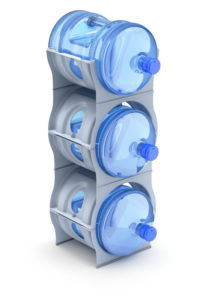
That important grave marker, which is like a mile marker for death, is a water supply.
Typically, in ideal conditions, you can go three-plus days without water.
However, while death may happen three days into a bout of dehydration, you will begin losing effectiveness much earlier.
So, know how much water you need a day and store water for your needs.
I recommend starting with at least two weeks of bottled water and building up from there.
When thinking about water, focus on storing water. Then move on to figuring out where you might acquire it and how you intend to purify it, so it's safe for drinking.
Sleep
Along with situational awareness, sleep is another factor of the survival pyramid that many people miss.
After all, talking about sleeping tactics isn't glamorous.
However, after three days without sleep, hallucinations and extreme loss of concentration and effectiveness set in. So, plan on getting sleep!
If not, fate may help you to sleep forever.
Food
The next relatively immediate need you should consider taking care of is food.
When it comes to the survival pyramid, you can go three weeks, sometimes longer, without food supplies.
However, after a few days of no food, the going isn't pretty.
Without food, you will quickly lose your energy, become ineffective, and worst of all, you'll be hangry in the apocalypse, and that's no fun!
So, plan on having an emergency food stockpile, and you'll have another of the prepping basics covered.
Food Storage
Knowing how to store food is crucial when it comes to long-term disasters.
Storing food doesn't necessarily mean filling a room up to the ceiling with freeze-dried food. Although having some freeze-dried foods is a great idea.
Start by adding a few non-perishable food items to your food supply.
You can do that by slowly stockpiling food each time you go to the store.
Stockpile Food
Stockpile foods such as canned vegetables and meats, rice, pasta, and beans.
Think about what your family enjoys eating and figure out ways to provide how much food your family members will need.
Cooking Your Food
Also, consider how you'll cook the food if the power is out. Will you use a camp stove, a biomass stove, a campfire, or an outdoor grill? Perhaps you have other ideas.
Whatever you choose, be sure your emergency preparedness includes plenty of fuel to cook food for you and your family.
Safety
Next, once you have your survival secured and you're reasonably sure you will make it, it's time to focus on our safety.
Safety follows survival because our safety needs build upon the foundation we establish by meeting our survival needs.
Health
This encompasses dealing with pre-existing conditions, illnesses that may crop up, and injuries that require first aid.
If you or a family member has a health condition requiring daily medication, try to get as far ahead on those meds as possible.
That way, if you can't get it from the pharmacy for a couple of months, you'll be able to hold out.
Having a variety of over-the-counter medications available can help you treat symptoms such as nausea, congestion, and coughs when your doctor and emergency services may not be available.
One way to make sure you stay on top of your health now is by visiting your medical provider regularly.
When visiting your doctor, take an active role in your healthcare, so you're aware of any limitations should a natural disaster strike.
While health insurance isn't always a part of a normal life, do your best to keep on top of your health and physical fitness. You'll thank yourself in the long run.
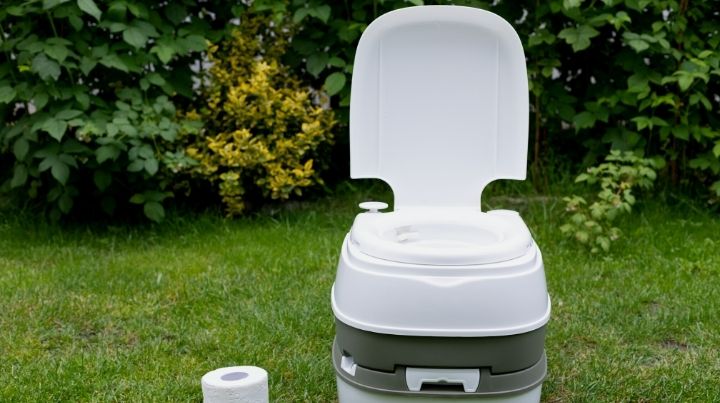
Sanitation
Sanitation and hygiene are critical in the fight to maintain your health.
This category is one of the very basics that many people don't consider.
You need a plan for what to do with the human waste of everyday life when the toilet doesn't flush.
You'll also need a plan for keeping clean without running water. Also, don't forget to include water purification on your emergency preparedness checklist.
That's because contaminated water is one of the most frequent causes of illness and even death after a disaster.
Security
Security relates to your home and shelter, yourself, and the people in your family or group.
It's a good idea to do a risk assessment to see where you might be able to reduce the likelihood of violence or property crime.
Many different prepper skills and tactics can help keep you and your loved ones safer.
Some things to consider are your everyday carry, self-defense ability, and having a bug-out bag ready to go.
Communications
Communications can be both outbound and inbound.
If you and your family aren't all together when a survival situation starts, you'll need to have a communication plan to make sure you can find one another at a moment's notice.
Remember that you may also lose cell phone service during a power outage.
You can resolve some of this by simply planning where you'll meet and how you'll get there.
Inbound communication is also essential because you need to know what's going on during an emergency.
This is where a battery-powered or a NOAA hand-crank radio comes in handy.
Be smart and don't rely solely on the internet or your cell phone for communications.
Energy
Last but not least is energy.
Energy comes in all sorts of forms when the power goes out.
You may decide you need a generator. If so, be sure to store enough fuel to run it for the duration of common emergencies where you live.
Other energy sources are batteries for flashlights, solar power, fuel for cooking, and power bank chargers for phones and devices.
Lastly, if you live in a cold climate, make sure your emergency supplies include the ability to stay warm during a winter power outage.
Self
Finally, once you have all of your safety needs met, it's time to focus on yourself.
Do you have personal needs, goals, and desires you'd like to make happen?
Well, this is the self-actualization part of Mazlow's Hierarchy of Needs. So, get to doing something for yourself because if you've made it this far in a disaster, you've done a fabulous job with all of the prepping basics!

This Will Help You Build a Foundation
The prepper basics discussed in this article will help you build a foundation to see you through most emergencies that you will face.
Building a foundation will help you to avoid many common prepping mistakes that can happen in the heat of the moment.
You'll also want to learn prepper skills like self-defense, short-term food storage, water storage.
Maintain a Balance
Make sure that you prep in balance.
You don't want to end up in the middle of an emergency with tons of toilet paper and not enough food.
Save money and mind your budget in case some level of economic collapse hits.
Also, have survival gear focused on the most likely event, which is not necessarily the nuclear war that many people talk about preparing for.
The Bottom Line of Prepping Basics
Do your best to learn the fundamentals of preparedness while focusing on the prepping basics.
If you are a more experienced prepper, what prepper basics do you recommend for those new to prepping?
If you are a newbie, do you have any questions about the information in this article? Let's discuss it in the comments section.
Additional Resources:
Stay safe!

Related Articles
FREE Guide
Read the Best Seller
Join Mind4Survival
Stay informed by joining the Mind4Survival! 100% Secure! 0% Spam!
Affiliate Disclosure...
Mind4Survival is a free, reader supported information resource. If you make a purchase through our link, we may, at no cost to your, receive an affiliate commission.
Do You Want To Be Ready No Matter What?

Download our free 39-page guide with interactive, 7-Day Emergency Kit Checklist and take the first step toward real preparedness.
- Know exactly where to start.
- Save time and money.
- How-to build a complete Basic Emergency Kit.
- Level up your safety and security.
Join Mind4Survival
Stay informed by joining the Mind4Survival! 100% Secure! 0% Spam!


